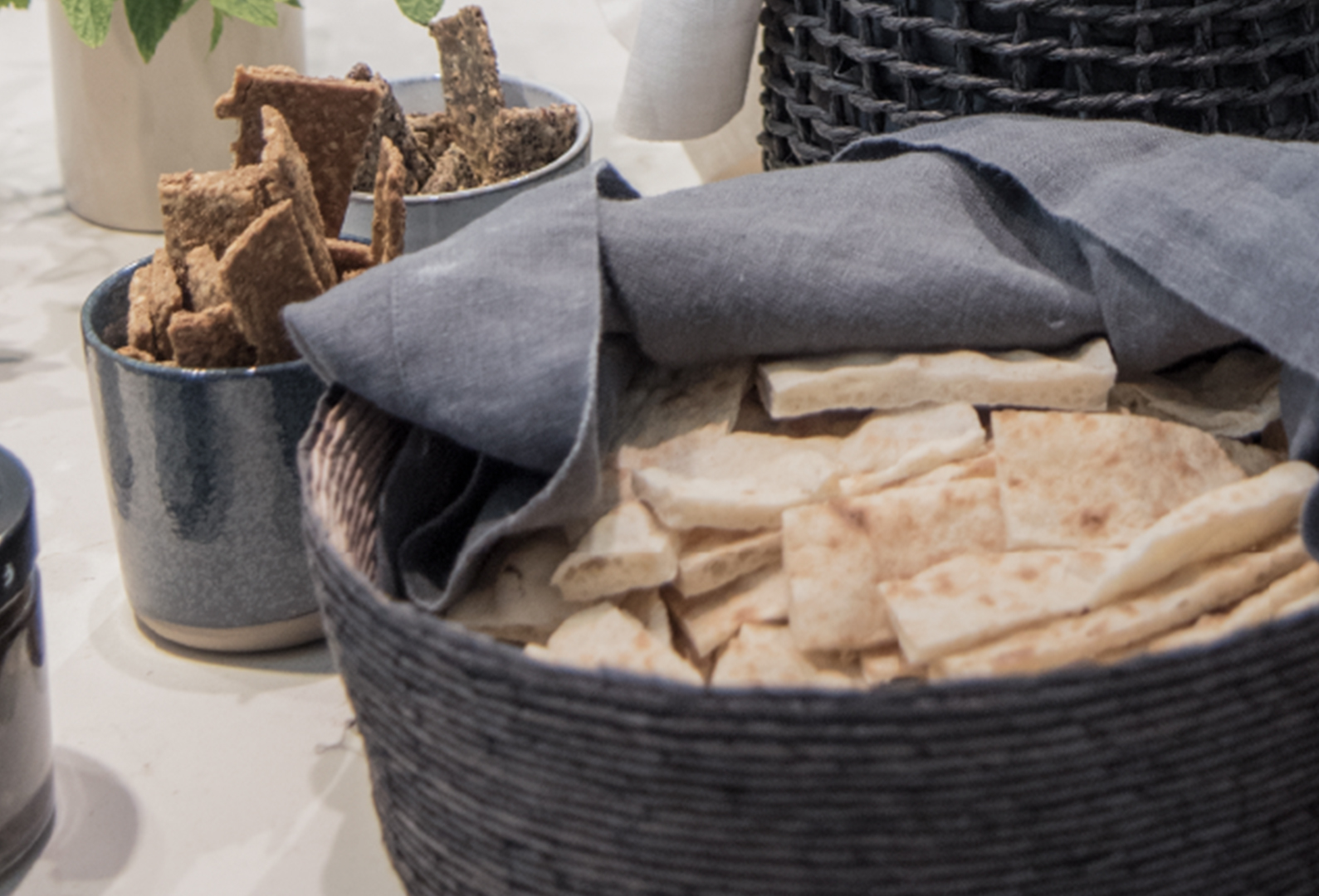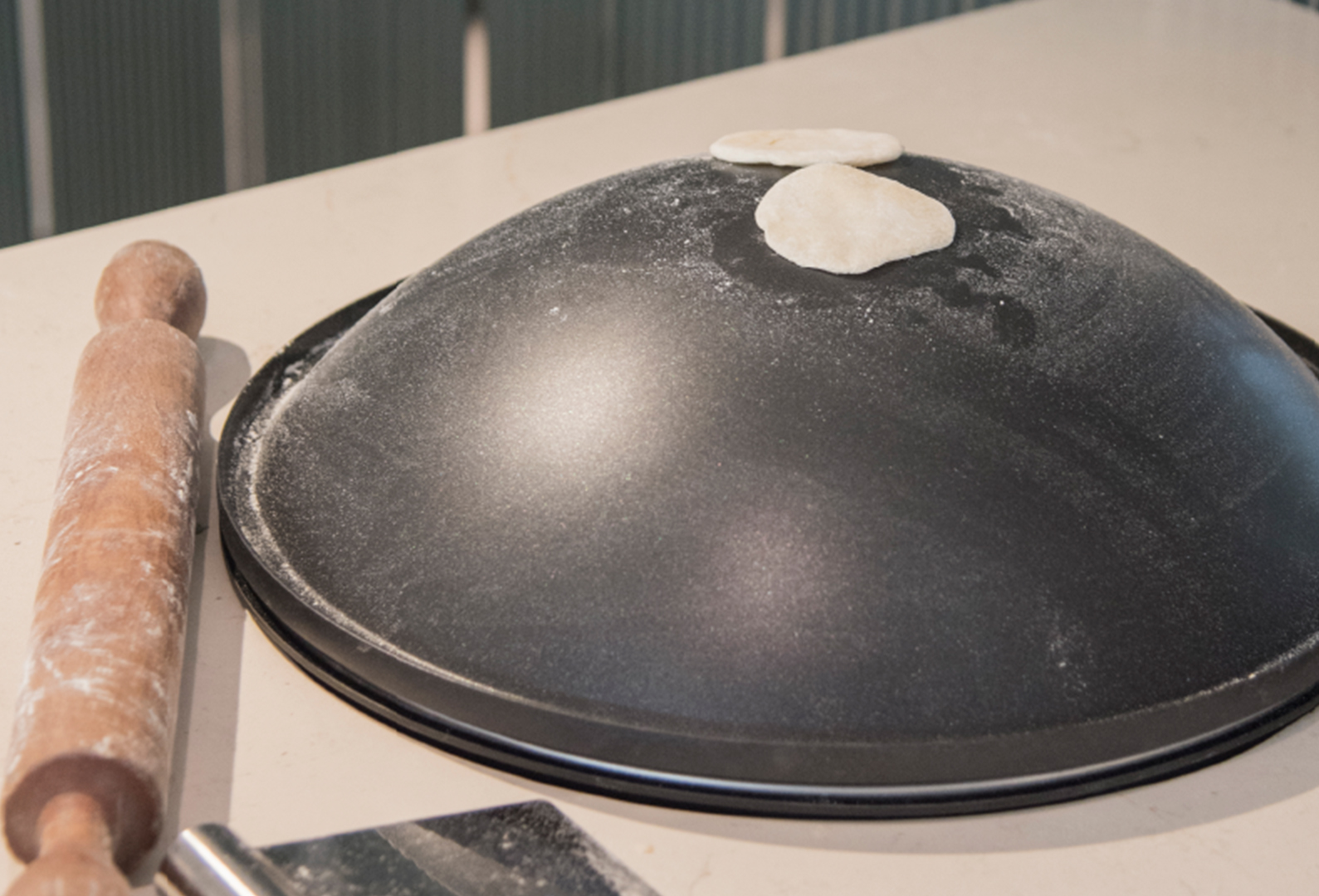rising to the occasion
The significance of bread in the region’s cuisine cannot be overstated: it is at once an entire food group and the most essential dinner utensil. It appears in myriad forms, from thick, leavened iterations to an endless variety of flatbreads – some soft and chewy, some crisp and hardened. The endless possibilities for combining different types of flour – white flour, wheat flour, semolina, and more – set the stage for delicious diversity.
Before the introduction of rice to the region, bread was even more essential to local cuisine. In fact, many of the Middle East’s famous rice dishes – like Jordanian mansaf – were first prepared with bread. But even with the widespread adoption of rice, bread is still the undisputed king of the Arabian culinary scene. The most popular type of bread, khubz or khubz arabi – also known as pita or Arabic bread – is a crucial part of mealtime. During breakfast, pieces of this bread are torn off and used to scoop up heaps of hummus, foul, labaneh, and other dips and dishes. At lunch and dinner, it becomes a backdrop for indulging in various mezze.
In the Levant, ka’ak is generously coated in sesame seeds, and rises up to form circles or half-moons. Locals will line up outside ka’ak carts each morning to have theirs filled with labaneh, za’atar, fresh vegetables, or eggs, transforming it into a savory breakfast in its own right.
And oven-baked bread is far from the only possibility, as diverse cooking methods allow for myriad textures and consistencies. Paper-thin shrak is baked atop a domed griddle, while crisp taboon gets its earthy flavor from being cooked underground – or atop a sheet of pebbles. Morocco’s soft, chewy batbout bread, meanwhile, is prepared in a pan or skillet on the stove.
Travel further out from the region’s center, and you’ll find even more variety, like the Moroccan msemmen, an impossibly thin and delightfully savory bread often filled with a layer of meat or cheese, or Yemen’s flaky, fried malawach. Even Armenia’s pillowy-soft lavash bread has become a favorite across the MENA region.
But no matter where you travel across the greater Middle East – from North Africa to the Levant, to the Persian Gulf – bread always rises to the occasion… whether it’s leavened or not.

